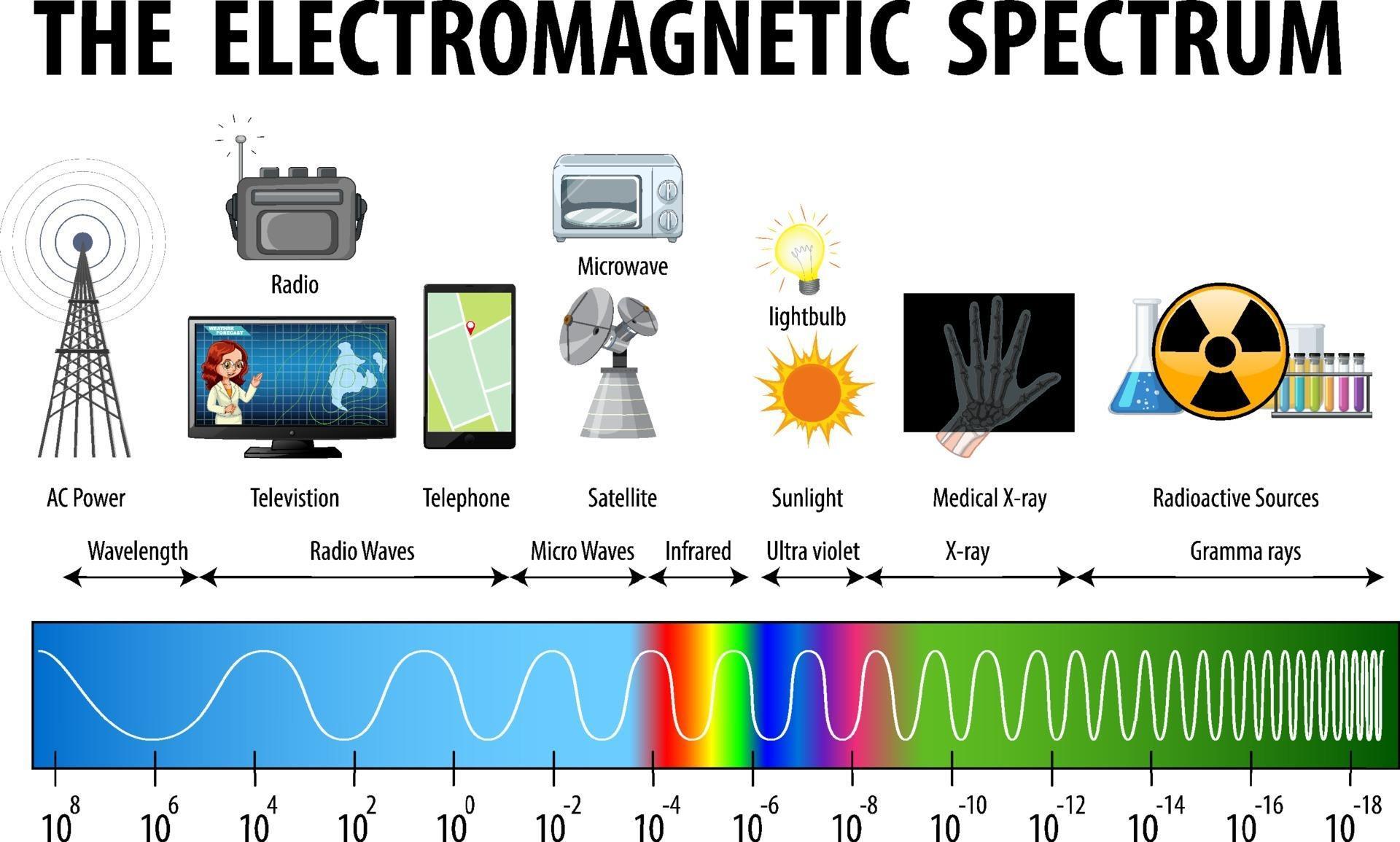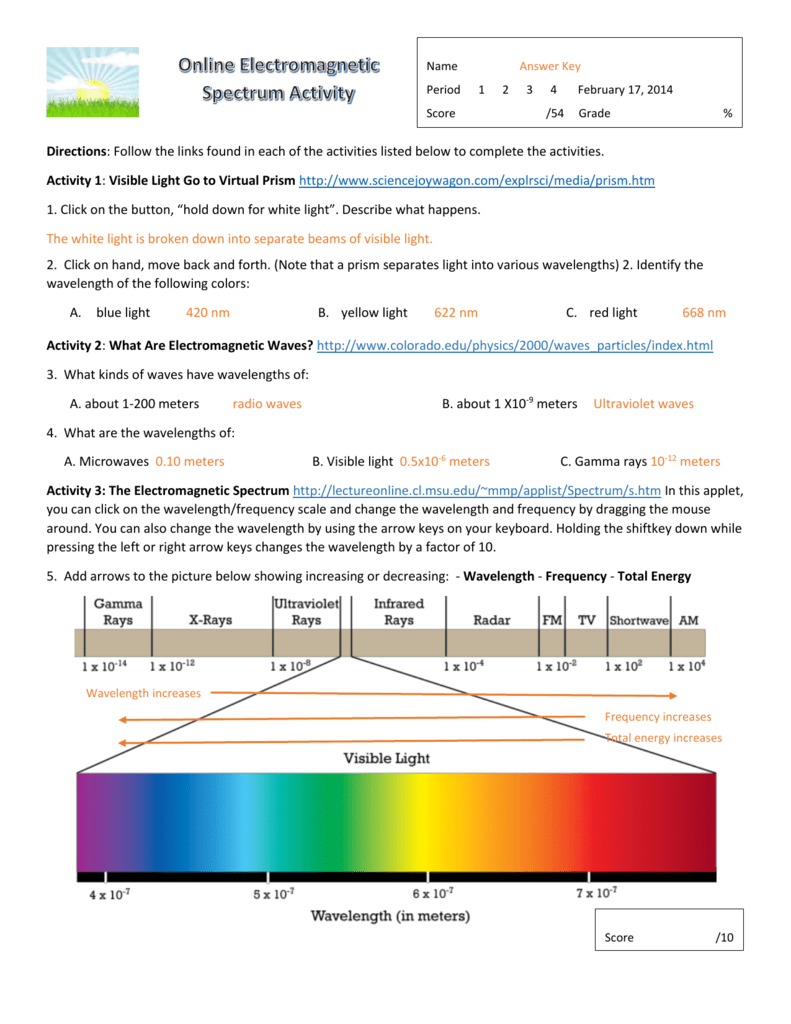Finding out how to understand typically the Electromagnetic Spectrum

The electromagnetic spectrum defines the range of electromagnetic waves that range from visible light to the gamma rays. It is a crucial component of science, and understanding this part of the world is essential. In this article I will go over some of the most important aspects of this spectrum and the way they work.
Infrared
Infrared is the radiation spectrum electromagnetic that goes beyond the visible light spectrum. The infrared band can be used to assess the temperature properties in objects. It is also used in night vision equipment.
In general, infrared is classified into near infrared and infrared. Near infrared refers to the wavelength range that includes the shortest frequencies. The wavelengths fall within the area of between one and five microns. There are also long and intermediate infrared bands. Each has the unique wavelengths.
The most famous use of infrared is for night vision goggles for soldiers. These goggles transform infrared into visible wavelengths to allow nighttime vision. However, infrared light can also used for wired and wireless communication.
There is no evidence of a link between infrared and skin cancer. However there is a link between infrared and skin cancer. International Commission on Non-Ionizing Radiation Protection (ICNIRP) has provided guidelines regarding the limit of exposure to incoherent visible and infrared radiation.
Visible light
Visible light is part of the electromagnetic spectrum. The Sun is the primary lighting source. The other sources for visible light include the moon and stars. It is important to know that we are unable to see ultraviolet and infrared wavelengths. But, we can see the red and blue light. These colors are mixed in what we call white light.
There are also many more obscure components to the spectrum of electromagnetic radiation, including radio waves and infrared. Some of these are utilized for radio, television and mobile communications. However, the most effective way to utilize these is to develop the correct kind of filter. In this way, we can reduce the negative impacts of these elements on our bodies. Similarly, we can create an online environment where we can safely look at these components with our eyes off.
While the longest and the shortest wavelengths of the visible light may be most noticeable, the most energy efficient and pleasing to the eye can be found in the infrared shortwave (SWIR) and microwave frequencies.

UV
Ultraviolet (UV) radiation is part of electromagnetic spectrum. It is used for various purposes. But it can also be dangerous. UVB and UVC radiations are harmful for eyesight and can cause skin disease.
This type of energy can be absorbed by molecules and start chemical reactions. The molecule that is absorbing it will release visible light and fluoresce.
The ultraviolet spectrum is split into three major categories, which are the extreme, near, as well as the middle. Typical ultraviolet sources include arc lamps, lasers, and light emitting diodes.
Although the wavelengths of UV rays are shorter than those of X-rays they have more energy. This can be useful in breaking the bonds between chemical compounds. These waves are also referred to by the name of nonionizing radiation.

In biochemistry the ultraviolet spectrum is commonly used to determine the absorption of a particular substance. There are many types of substances with significant light absorption bands in the UV.
Ultraviolet light is part of the electromagnetic spectrum which is produced from the sun. Its spectrum is between ten and four hundred nanometres, and its frequency ranges from 800 THz to 30 PHz. But, the majority of people can't be able to see it.
X-rays
X-rays are electromagnetic radiation that has high energy. In contrast to gamma rays and UV light, X-rays have wavelengths smaller than visible light and they can penetrate relatively thin objects. They are utilized in a myriad types of applications in medicine, like imaging bones and tissues. Several types of X-rays exist.
Hard X-rays occur by the collision of an electron with an atom. This results in a vacancy within the electron shell of the atom. Another electron could fill in the gap. Alternatively, the incoming electron could kick out an atom. If this occurs, a portion of the energy of an electron is transferred onto the scattered one.
The X-ray spectrum is not to be confused with the X band, which is a low-energy spectrum that is part of the electromagnetic spectrum. Although the two bands are separated by only a couple of hundreds of nanometers each, they don't have the same characteristics.
Because X-rays are penetrating the body, they can be utilized in a myriad of ways. For instance, X-rays are employed in security screening procedures to identify cracks in baggage. They are also used in radiotherapy for cancer patients. X-rays are also used to discover the structural components of materials such as cement.
Gamma rays
Gamma rays are extremely high-energy forms in electromagnetic radiation. In em spectrum wavelength , all high energy photons are radiations. These photons are created by nuclear decay and high-energy physical experiments. They are the most powerful photons that are found in the electromagnetic spectrum.
Due to their powerful energy, gamma rays are capable of piercing deep into materials. The possibility exists for gamma beam to penetrate as much as a few inches of lead.
Several high-energy physics experiments produce the gamma radiation. For example, a beam of relativistic particles centered on by a magnetic field from hypernovas can be observed at a distance of 10-billion light years.
Gamma rays can be emitted by the nucleus of some radionuclides after they have gone through radioactive decay. Other sources of gamma radiation include atomic transitions, annihilation, and sub-atomic particle interactions.
The majority of gamma radiation in astronomy are derived from other mechanisms. Gamma rays from supernovae and nuclear fallouts are some of the strongest types in electromagnetic radiation. This makes them a great source for exploring the universe.
Certain gamma radiations could cause damage to cells in the body. However, gamma rays are not as ionizing as alpha and beta rays, so they are less likely to cause cancer. However, gamma rays could alter the DNA structure and cause burns. Even the smallest doses of gamma rays may cause Ionization within the body.
